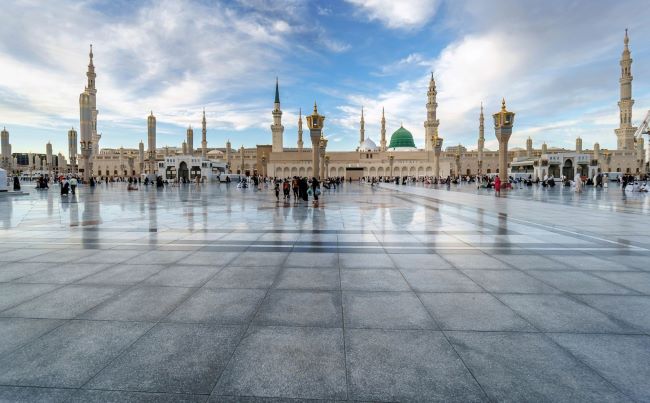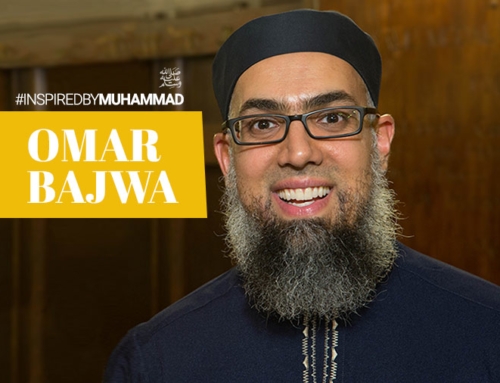The Prohibition of Drawing or Painting Prophets in Islam
As followers of the Abrahamic faith, Muslims follow many of the same religious practices as Jews and Christians. Muslims believe in many of the same Prophets as Jews and Christians such as Abraham, Noah, David, Solomon, Moses, and Jesus, peace be upon them all. However, Muslims view all Prophets, especially the Prophet Muhammad, peace be upon them all, with great reverence. In Islam, drawing or painting any Prophet is prohibited. Before I explain why it is prohibited, it is important to give a brief explanation about who the Prophet Muhammad (peace be upon him) was.
What Does Islam Teach About the Prophet Muhammad (peace be upon him)?
Muslims follow the teachings and example set by the Prophet Muhammad (peace be upon him), who lived from 570-632 CE. Muslims believe that the Prophet (peace be upon him) received a series of divine revelations from God through the Angel Gabriel, which were later recorded in the Qur’an. For Muslims, the Prophet Muhammad (peace be upon him) is a religious leader and role model in all areas of life. He is regarded as the final prophet sent to mankind, as well as the perfect example of how to live a holy life in accordance with Islam. All Prophets and Messengers are believed to be God’s selected humans who lived as role models for others. In this regard, Muslims revere the Prophets of God and believe them to be sinless. The manner in which they are spoken of or depicted is usually done with utmost reverence. Joking about, or using any of their name in vain, is often viewed as a serious sin.
Why is Drawing the Prophet Muhammad (peace be upon him) Prohibited?
There are several reasons why Muslims are not permitted to draw Prophet Muhammad (peace be upon him) or create visual imagery of him. Among them is a prohibition of idolatry. Drawing pictures of the Prophet Muhammad (peace be upon him) is seen as a form of idolatry. Idolatry is viewed as a serious sin in Islam, as it is directed towards images rather than God.
Additionally, the Prophet Muhammad (peace be upon him) is seen as the final prophet sent to humanity. In this sense, he is believed to be the perfect example of how to live a righteous life. As such, Muslims believe that to depict the Prophet Muhammad (peace be upon him) would be problematic because no image is an actual depiction of him. The Prophet’s (peace be upon him) physical features were a unique part of his Prophethood in the sense that his smile, eyes, the way he walked, and dressed all conveyed a message of love and mercy. When someone draws the Prophet (peace be upon him), many of those nuances are lost, and worse the opposite can be conveyed. For example, if someone draws the Prophet with a stern face, this depiction is not him and may convey a message different than who he actually is. We see a similar problem with the images of Jesus today, who is often portrayed as being blonde with blue eyes. This gives Jesus (peace be upon him), a sense of whiteness that is unlikely. Drawing an image of any Prophet will depict them in an inaccurate way and even if done with a good intentions, will undoubtedly result in an image that is different than who they are.
Other Reasons Why Muslims Do Not Draw Prophet Muhammad (peace be upon him)
While the reasons listed above are some of the most prominent reasons why Muslims do not create images of the Prophet Muhammad (peace be upon him), there are also other factors to consider. Some of these include such as focusing on the message of the Prophet (peace be upon him). Islam is a religion that does not want to distract from the worship of God. Images and statues can, over time, result in the worship of statues and idols. If one enters a church, they are likely to see images of Jesus or Mary (peace be upon them). However, if one enters a mosque one is likely to find calligraphy of the word of God, rather than an image of God or a person. The focus is more on the message.
How Do Muslims Show Respect for the Prophet (peace be upon him)?
While Muslims do not create visual representations of the Prophet Muhammad (peace be upon him), they do show him respect. In fact, Muslims follow a number of practices that show their reverence for the Prophet (peace be upon him). Some of these include such as studying his life. Muslims are encouraged to study the Prophet’s (peace be upon him) life, as well as his teachings in great detail. They analyze not only historical facts, but how he dealt with different situations in life such as finances, family challenges, political problems, hygiene, and interpersonal relationships. In each of these areas Muslims look to the Prophet Muhammad (peace be upon him) for an example of how to live.
Unveiling the Power of Words over Images
Muslims do not draw images of any Prophet, including the Prophet Muhammad, (peace be upon all of them), because images speak. As the saying goes, a picture is more than a thousand words. Because no one today knows how the Prophets looked, drawing them would convey their image in an inaccurate manner. This can result in a Prophet looking a certain way such as “mean” “angry” “foolish” etc. Additionally, instead of drawing images of Prophets, Muslims focus on their actual message. That is why in mosques, one finds the words of God or the Prophets written in beautiful calligraphy, rather than their images.
Note: The “peace be upon him” or “peace be upon them” next to Prophet(s) represents the invocation Muslims say as a form of respect
Got Questions?
We have Answers. Get in touch now.








